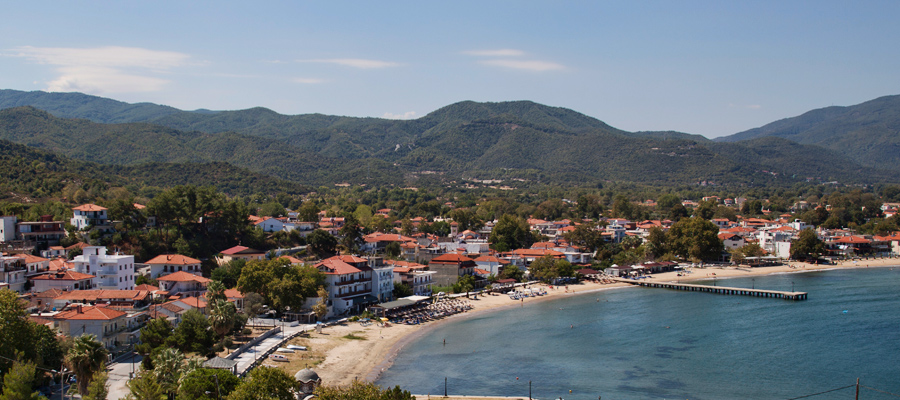The settlement of Olympiada was created in 1923, in a location where there had been a makeshift agricultural settlement with huts where a few families lived. Here, refugees from Agia Kyriaki of Asia Minor arrived after the uprooting of 1922, and the inhabitants of the agricultural settlement moved to present-day Stageira. The area has great historical significance as the ancient Stageira ruins are located here. These ruins are situated to the east of the settlement, approximately 700 meters away, in the Liotopi area.
According to a local tradition, the name of the village comes from Olympiada, the mother of Alexander the Great. King Cassander had exiled her to Ancient Stageira or, according to others, to the adjacent island of Kapros. It lies across from Olympiada, about 1.5 nautical miles away, and is called Kafkanas. Kapros is also mentioned by the ancient geographer Strabo. According to him, the same name was given to the harbor of the ancient city of Stageira.
The present-day village, built along a beautiful beach, stretches into the bay of its natural harbor. It is framed by lush mountains and enchanting beaches that attract many visitors every summer. During the feast of its patron saint, Agia Kyriaki, cultural and artistic events are organized, as well as a seminar focusing on the life and work of the famous Stageiran philosopher Aristotle.
EXCAVATIONS AT ANCIENT STAGEIRA
The excavations at Ancient Stageira began in 1990, funded by the European Union and the Ministry of Culture, with the participation of the Olympiada Community. For a decade thereafter, every summer, research continued under the direction of the 16th Ephorate of Prehistoric and Classical Antiquities of Thessaloniki, led by archaeologist Dr. Kostas Sismanidis.
Dr. Sismanidis himself provides the following information about the excavation history:
“Before the excavations at Ancient Stageira began, only traces of medieval habitation on the northern hill (primarily the Byzantine defensive wall) were visible, while only a few remains of the older city of Stageira could be distinguished amidst the dense forested vegetation. A preliminary, small-scale, and brief excavation effort was undertaken in 1968 by the then-director of the Thessaloniki museum, F. Petsas. At that time, research was carried out at two locations outside the fortified city limits: at the Sykea bay, where retaining walls from the Classical period were revealed, and at the Vina site (about 1.5 km southeast of Ancient Stageira), where a circular tower was discovered. The impetus for this effort came from the discovery of an unfinished kouros statue, which was retrieved by a private diver from the Liotopi bay. More than 20 years had to pass after that first excavation attempt before systematic excavations at Stageira resumed. They began with test and exploratory trenches in September 1990. The particularly encouraging results from that research created favorable conditions for the continuation of the excavations.”
THE ARTICLE



